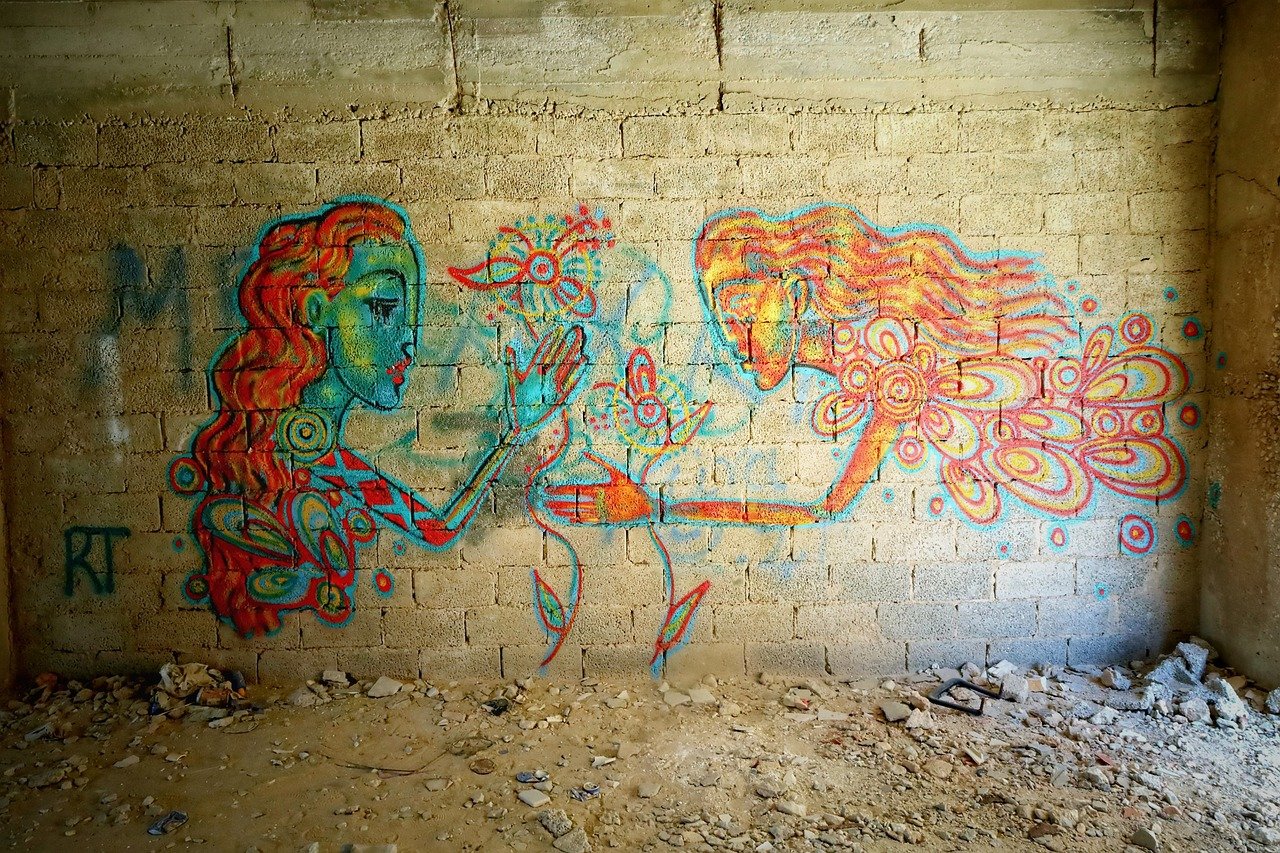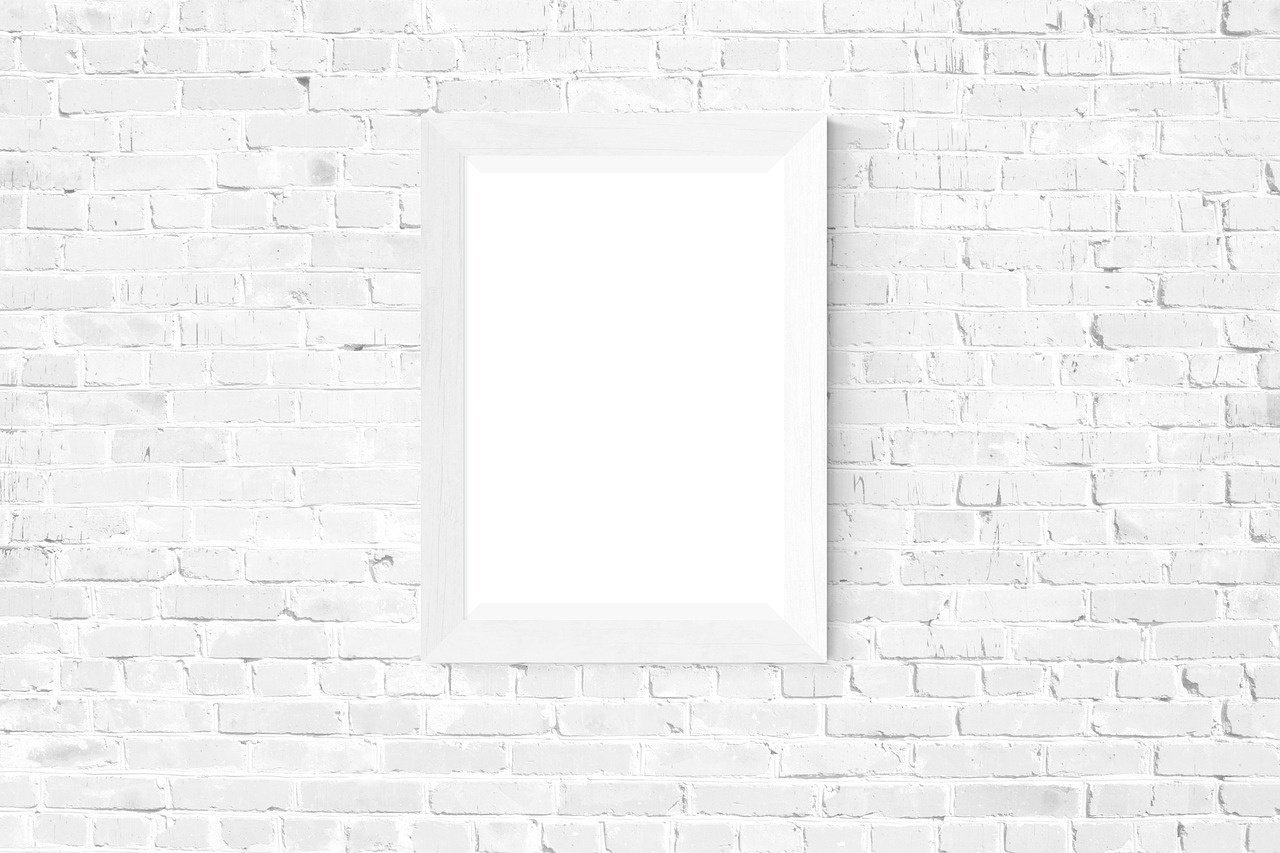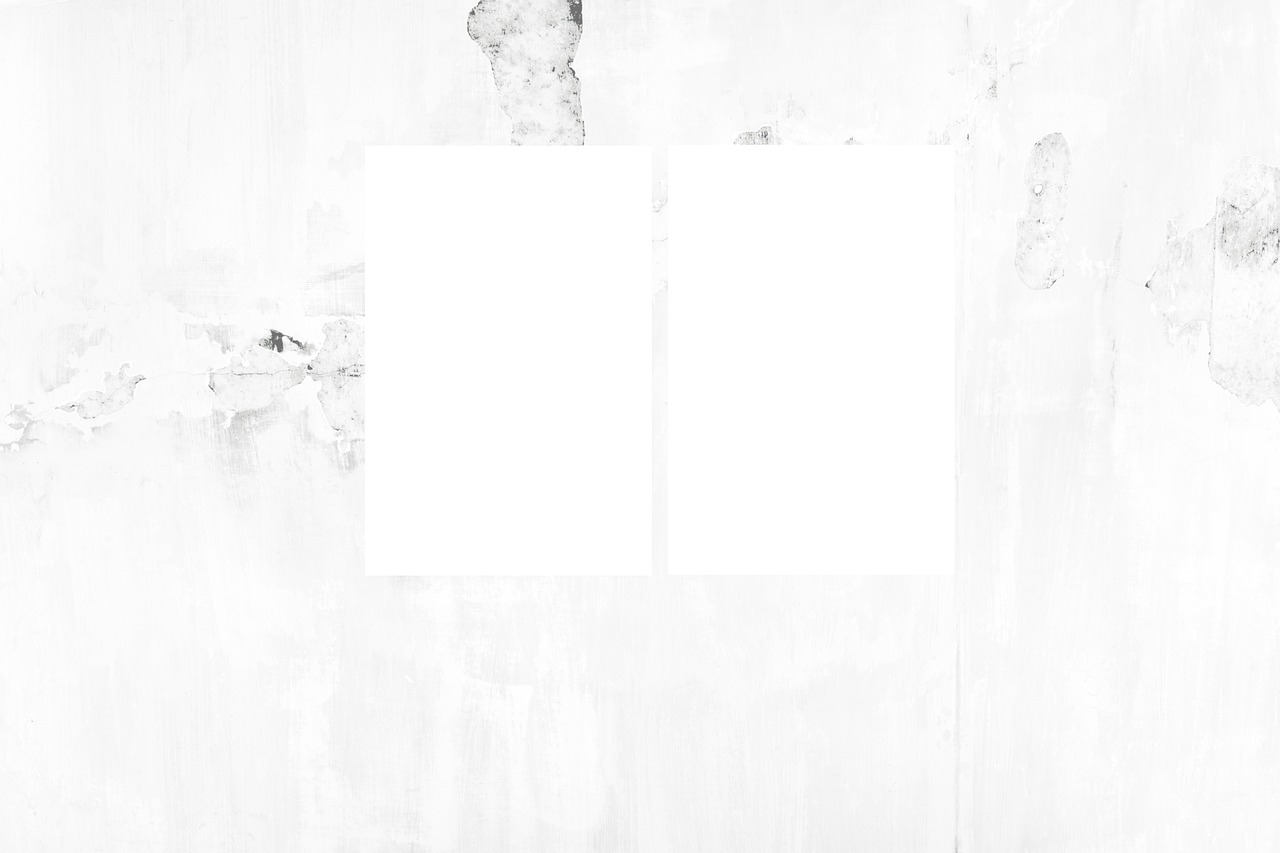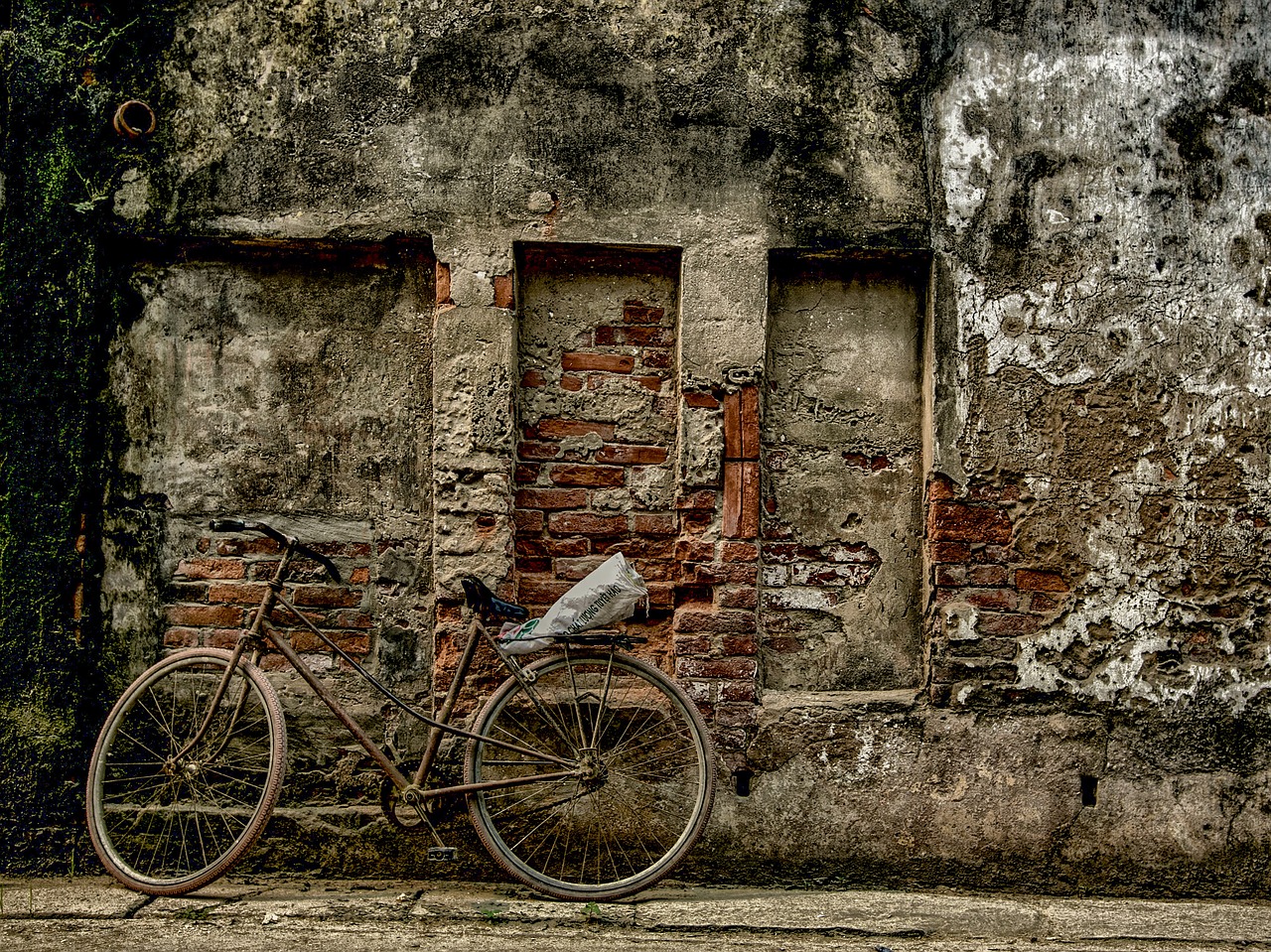5 Essential Tips for Creating a Gallery Wall
This article provides five crucial tips to help you design a stunning gallery wall that showcases your personal style and creativity while enhancing the aesthetic of your space. A gallery wall is more than just a collection of art; it's a reflection of who you are and what you love. Imagine walking into a room and being greeted by a vibrant display that tells your story—each piece sparking a memory or an emotion. Whether you're an art aficionado or a casual collector, these tips will guide you in creating a gallery wall that not only captivates the eye but also resonates with your spirit.
Selecting the perfect wall is fundamental for your gallery. Consider factors like visibility, size, and lighting to ensure your artwork stands out and complements the surrounding decor. You wouldn’t want to hide your masterpiece behind a door or in a dimly lit corner, right? Look for a wall that invites attention, perhaps a large, empty space in your living room or a hallway that feels a bit too plain. The wall should be a canvas for your creativity, serving as a backdrop that enhances the beauty of your chosen art pieces.
Curating a diverse collection of artwork is vital. Mix different styles, sizes, and mediums to create visual interest and reflect your personality, ensuring each piece contributes to the overall theme. Think of your gallery wall as a conversation—each artwork should have something to say. You might want to consider:
- Paintings: These can add depth and color.
- Photographs: Personalize your space with memories.
- Textiles: Fabrics can introduce texture and warmth.
By blending various forms of art, you create a dynamic visual experience that draws the eye. Remember, the goal is to tell your story through a mix of pieces that resonate with you.
Combining various art forms, such as paintings, photographs, and textiles, adds depth to your gallery wall. Experimenting with textures and materials can create a dynamic visual experience. Imagine a soft, woven wall hanging juxtaposed against a bold canvas painting—it’s like a dance of texture and color that keeps the viewer engaged. Don't shy away from including three-dimensional pieces or even DIY crafts; they can add an unexpected twist to your gallery.
Choosing the right frames is essential for unifying your collection. Opt for similar styles or colors to create cohesion while allowing individual pieces to shine. Think of frames as the outfits for your artwork—some pieces may look best in sleek, modern frames, while others might thrive in vintage, ornate styles. You can even mix and match, but be sure to maintain a consistent theme to avoid visual chaos.
Consider a color palette that ties your artwork together. This can enhance the overall look and feel of your gallery wall, creating a harmonious and inviting atmosphere. A well-chosen color scheme can evoke emotions and set the mood of the room. For instance, soft pastels can create a calming effect, while bold colors can energize the space. Experiment with swatches and see how different colors interact with your art pieces before making a final decision.
The arrangement of your pieces greatly impacts the wall's visual appeal. Explore different layouts, such as grid or salon-style, to find the best fit for your space. A grid layout gives a clean, organized look, while a salon-style arrangement allows for more creativity and spontaneity. When arranging, lay the pieces on the floor first to visualize how they will look on the wall. This step can save you from a lot of guesswork and nail holes!
Proper spacing between artworks is crucial for a balanced look. Ensure consistent gaps and alignment to maintain an organized appearance, making your gallery wall more visually appealing. A good rule of thumb is to leave about 2 to 5 inches between each piece, depending on the size of the artworks. This spacing creates a breathing room for each piece, allowing them to stand out without overwhelming each other.
Highlighting specific pieces can draw attention and create a focal point in your gallery. Use larger or bolder artworks strategically to guide viewers' eyes throughout the display. Think of this as creating a path for the viewer to follow; the focal point acts as a starting point, inviting exploration of the surrounding pieces. You can also use lighting to accentuate these focal points, making them pop even more.
Adding personal elements, such as family photos or travel mementos, can make your gallery wall uniquely yours. These touches not only enhance the design but also tell your story. Imagine walking past a beautiful piece of art that reminds you of your last vacation or a family portrait that brings back cherished memories—these elements create a connection that resonates deeply. Don’t hesitate to include items that hold sentimental value; they can transform your gallery wall into a personal narrative.
1. How do I choose the right wall for my gallery?
Look for a wall that is visible and well-lit. It should be a space that invites attention and complements the overall decor of your room.
2. Can I mix different styles of art?
Absolutely! Mixing different styles, sizes, and mediums adds interest and reflects your personality. Just ensure there’s a common theme or color palette for cohesion.
3. What is the best way to arrange my artwork?
You can either go for a grid layout for a clean look or a salon-style arrangement for a more eclectic feel. Lay out the pieces on the floor first to visualize the arrangement.
4. How much space should I leave between artworks?
A good rule of thumb is to leave about 2 to 5 inches between each piece, depending on their size. This spacing allows each artwork to breathe and stand out.
5. What personal touches can I add to my gallery wall?
Incorporating family photos, travel souvenirs, or handmade art can make your gallery wall unique and meaningful, telling your personal story.

Choosing the Right Wall
When it comes to creating a stunning gallery wall, the first step is selecting the perfect wall. It’s like choosing the right canvas for a masterpiece; the wall sets the stage for your artistic expression. So, what should you consider? Here are a few key factors:
- Visibility: Pick a wall that’s easily seen. Whether it’s in the living room, hallway, or even a cozy nook, your gallery should be in a spot where it can be appreciated daily.
- Size: The wall’s size matters! A small wall can be overwhelmed by large pieces, while a vast expanse may require larger artworks or a more intricate arrangement to avoid looking sparse.
- Lighting: Natural light can make your artwork pop, but too much direct sunlight can fade colors. Look for a wall that strikes a balance—perhaps near a window but not in direct sunlight.
Imagine walking into a room and your eyes immediately drawn to a beautifully curated wall. That’s the magic of choosing the right backdrop! Consider the surrounding decor as well; the wall should complement your existing furnishings and color schemes. For instance, if your room has a modern vibe, a sleek, minimalist wall will enhance the overall aesthetic.
Another tip is to think about the functionality of the space. If it’s a high-traffic area, ensure the wall can handle the wear and tear. You don’t want your art to become a casualty of daily life! In contrast, a quieter space allows for more delicate pieces that may require a little more care.
Lastly, don’t forget to consider the emotion you want to evoke. A gallery wall can tell a story or set a mood. Whether you want it to feel warm and inviting or sleek and sophisticated, the wall you choose will play a significant role in conveying that message. So, take your time, visualize your art in various spots, and choose a wall that resonates with your vision.

Art Selection
When it comes to creating a gallery wall, the is where the magic truly begins! Imagine walking into a room and being greeted by a vibrant display that not only catches your eye but also tells a story. This is your chance to showcase your personality and interests through your art. But how do you curate a collection that stands out? Start by considering a diverse range of artwork that reflects your unique style. Mixing different styles, sizes, and mediums can create a visual feast that keeps the viewer engaged. Think about incorporating everything from paintings and photographs to textiles and even sculptures.
One effective approach is to categorize your art into themes. For instance, you might choose to focus on a particular color scheme or a specific subject matter. This can enhance the cohesiveness of your gallery wall. However, don't shy away from mixing it up! A well-balanced gallery wall often features a delightful contrast of styles. For example, pairing a modern abstract painting with a classic landscape photograph can create an intriguing dialogue between the pieces.
Another fantastic tip is to think about the scale of your artwork. Large pieces can serve as stunning focal points, while smaller works can be grouped together to create a dynamic arrangement. Consider the following when selecting your art:
- Size: Ensure that the size of the pieces complements the wall space.
- Style: Mix contemporary and traditional styles for a more eclectic look.
- Medium: Combining different mediums adds depth and texture.
Lastly, don't forget to incorporate your own personal touches! Family photos, travel souvenirs, or even DIY art projects can add a layer of intimacy to your gallery wall. These elements not only enhance the design but also tell your story, making your space feel truly unique. Remember, the goal is to create a gallery wall that feels like you. So, take your time in selecting pieces that resonate with you, and don’t be afraid to let your creativity shine!
Q: How many pieces should I include in my gallery wall?
A: The number of pieces can vary based on the size of your wall and the artwork itself. A good rule of thumb is to start with 5-7 pieces and adjust as needed.
Q: Can I mix different frame styles?
A: Absolutely! Mixing frame styles can add an eclectic touch to your gallery wall. Just ensure that there is some commonality, like color or material, to tie them together.
Q: What if I don't have enough artwork?
A: Consider creating a few DIY pieces or incorporating other decorative items, such as mirrors or wall hangings, to fill in the gaps.

Mixing Mediums
When it comes to creating a stunning gallery wall, one of the most exciting aspects is mixing different mediums. Imagine walking into a room where the walls are alive with a variety of textures and styles; it instantly makes the space feel more inviting and dynamic. By combining paintings, photographs, and even textiles, you can create a visual feast that not only captivates the eye but also showcases your unique personality.
Consider how each medium interacts with the others. For instance, a vibrant abstract painting can serve as a perfect backdrop for a series of black-and-white photographs, creating a striking contrast that draws the viewer in. Similarly, incorporating textiles—like a woven wall hanging or a quilted piece—adds a tactile element that can soften the overall look and feel of the wall. The key is to find a balance that feels cohesive yet eclectic.
Here are some ideas to inspire your creativity:
- Layering Textures: Use a mix of smooth paintings and rough textiles to create depth.
- Contrasting Styles: Pair modern art with vintage photographs to create a conversation piece.
- Incorporating 3D Elements: Add shelves with small sculptures or plants to break up the flatness of the wall.
Remember, the goal is to create a visual narrative that reflects your journey and interests. Each piece should feel like it belongs, yet also stand out in its own right. Don’t be afraid to experiment with different layouts and placements until you find a combination that resonates with you. The beauty of a gallery wall is that it can evolve over time; you can swap out pieces, add new ones, or even change the arrangement as your tastes and experiences change.
Ultimately, mixing mediums is about celebrating diversity in art. Just as a well-composed meal combines various flavors for a delightful experience, your gallery wall should blend different artistic expressions to create a cohesive yet intriguing display. So, get creative, trust your instincts, and let your gallery wall tell your story in a way that's uniquely you!
- How do I choose the right mediums for my gallery wall? Consider your personal style and the overall theme of your space. Mixing mediums can enhance the visual interest, so think about what resonates with you.
- Can I mix framed and unframed art? Absolutely! Mixing framed and unframed pieces can add an organic feel to your gallery wall, but ensure they are balanced in terms of color and style.
- What if I don't have a lot of art? Start with a few key pieces and gradually add more. You can also include personal items like travel souvenirs or family photos to fill the space.

Framing Options
When it comes to creating a stunning gallery wall, play a pivotal role in enhancing the overall aesthetic of your artwork. The right frame can transform a simple piece into a striking focal point, while the wrong choice can detract from its beauty. So, how do you choose the perfect frames for your collection? First, consider the style of your artwork. Are you showcasing modern pieces that call for sleek, minimalist frames, or are you leaning towards vintage artworks that would look best with ornate, classic framing? The key is to find a balance that complements your art without overshadowing it.
Another important aspect is the color of the frames. Sticking to a cohesive color palette can create a unified look across your gallery wall. For instance, if your artwork features a lot of warm tones, consider using frames in similar hues or in neutral colors like white, black, or natural wood. This approach allows the art to take center stage while still maintaining a polished appearance. On the other hand, if you're feeling adventurous, mixing frame colors can add an eclectic vibe, but be cautious—too much variety can lead to chaos rather than harmony.
Additionally, the size and shape of the frames should be taken into account. Larger pieces often look great in bold, oversized frames, while smaller artworks can be grouped together in a gallery-style arrangement. This not only creates visual interest but also helps in establishing a rhythm across the wall. When arranging your pieces, think about incorporating different frame shapes—rectangles, squares, and even circular frames can add dimension and intrigue to your display.
To illustrate these ideas, here’s a simple table that summarizes various framing styles and their ideal use cases:
| Frame Style | Best For |
|---|---|
| Modern Minimalist | Contemporary art, photographs |
| Ornate Vintage | Classic paintings, family heirlooms |
| Colorful Eclectic | Mixed media, children’s art |
| Simple Wooden | Nature scenes, rustic art |
Finally, don’t forget about the matting. Adding a mat can provide a visual buffer between the artwork and the frame, enhancing the overall presentation. A well-chosen mat can also introduce a pop of color or texture, adding another layer of depth to your gallery wall. When selecting mats, aim for colors that either complement or contrast with your artwork to create an inviting and engaging display.
In conclusion, choosing the right framing options is essential for achieving a cohesive and visually appealing gallery wall. By considering the style, color, size, and matting of your frames, you can create a stunning display that not only showcases your artistic collection but also reflects your personal style. So, go ahead and get creative with your frames—they're the finishing touch that can elevate your gallery wall from ordinary to extraordinary!
Q: How do I choose the right frame for my artwork?
A: Consider the style, color, and size of both the artwork and the frame. Aim for a cohesive look that enhances the art without overpowering it.
Q: Can I mix different frame styles on the same wall?
A: Yes, mixing different styles can create an eclectic look, but be cautious to maintain some level of cohesion to avoid chaos.
Q: Should I use mats with my frames?
A: Mats can enhance the presentation of your artwork and provide a visual buffer, making them a great addition to your gallery wall.
Q: What colors should I use for my frames?
A: Choose colors that complement your artwork. Neutral colors work well for a cohesive look, while colorful frames can add an eclectic vibe.

Color Coordination
When it comes to designing a gallery wall, is not just an afterthought; it's a vital element that can either elevate your display or make it feel chaotic. Imagine walking into a room where the colors of the artwork harmoniously blend with the surrounding decor, creating a cohesive and inviting atmosphere. To achieve this, start by selecting a color palette that resonates with your personal style and the mood you want to set in the space. This palette can be derived from the colors in your furniture, wall paint, or even the flooring.
One effective approach is to choose a dominant color that will serve as a unifying theme for your gallery wall. For example, if your living room features soft blues and whites, consider incorporating artwork that includes these hues. This doesn’t mean every piece has to match perfectly, but rather that they should complement one another. Think of your gallery wall as a musical ensemble—each piece is an instrument that contributes to a harmonious melody.
Additionally, you can utilize a mix of neutral tones to balance out bolder colors. Neutrals like whites, grays, and beiges can act as a backdrop that allows your vibrant pieces to pop. This strategy not only enhances the overall visual appeal but also prevents overwhelming the viewer with too much color. For instance, pairing a vibrant abstract painting with a subtle black-and-white photograph can create a striking contrast that draws the eye.
To make the process easier, consider creating a small color swatch board using paint samples, fabric swatches, or even printed images of your artwork. This will help you visualize how different colors interact with one another and ensure that your selected pieces will work well together. Remember, the goal is to create a gallery wall that feels intentional and curated rather than a haphazard collection.
In summary, effective color coordination can transform your gallery wall from a simple display of art into a stunning focal point in your home. By thoughtfully selecting a color palette, balancing bold hues with neutrals, and visualizing your layout beforehand, you can create a space that not only showcases your personal style but also enhances the overall aesthetic of your room.
- What is the best way to choose a color palette for my gallery wall?
Start by considering the existing colors in your room, including furniture and decor. Use these as a foundation to select artwork that complements or contrasts these shades. - Can I mix different styles of artwork on the same wall?
Absolutely! Mixing styles can add visual interest. Just ensure that there is some form of color or thematic cohesion among the pieces. - How do I know if my color coordination is effective?
Step back and view your gallery wall from different angles. If the colors feel balanced and the pieces draw your eye in a pleasing manner, you’ve likely achieved effective coordination.

Arranging Your Art
Arranging your art is like piecing together a puzzle; each piece has its own unique shape and story, but together they create a beautiful picture. The way you organize your artwork can dramatically affect the overall vibe of your gallery wall, transforming it from a mere collection of pieces into a cohesive narrative. So, how do you go about this? First, consider the layout that best suits your space. A grid layout offers a structured, modern look, while a salon-style arrangement provides a more eclectic and dynamic feel. Think of it as setting the stage for a play; each piece should have its moment to shine, but they also need to work together harmoniously.
When deciding on your arrangement, it’s helpful to lay everything out on the floor first. This allows you to visualize how the pieces interact without committing to hanging them just yet. You might find that some pieces complement each other beautifully, while others might clash. Pay attention to the flow of the artwork; your eyes should dance smoothly from one piece to the next. A good rule of thumb is to keep similar sizes and styles grouped together, but don’t be afraid to break the mold and introduce a standout piece that can act as a conversation starter.
Another important aspect to consider is the height at which you hang your art. A common mistake is to hang everything too high; ideally, the center of your artwork should be at eye level, around 57 to 60 inches from the floor. This simple adjustment can make a world of difference in how your gallery wall is perceived. You want your viewers to feel invited to engage with the pieces, not to strain their necks looking up at them. For larger pieces, consider placing them lower on the wall to create balance and draw the viewer's attention.
Lastly, don’t forget to incorporate some negative space. Just like in music, where silence can be just as powerful as sound, negative space in art arrangements allows each piece to breathe. Avoid overcrowding your wall with too many pieces; give each artwork room to shine. This can be achieved by strategically placing smaller pieces in relation to larger ones, creating a visual hierarchy that guides the viewer’s eye across the wall.
In summary, arranging your art is an art form in itself. Take your time, experiment with different layouts, and don’t be afraid to rearrange until you find the perfect composition. After all, your gallery wall is a reflection of you—make it a masterpiece!

Spacing and Alignment
Creating a stunning gallery wall isn't just about the artwork you choose; it's also about how you present it. play a crucial role in the overall aesthetic and impact of your display. Imagine walking into a room where the art feels cramped or haphazardly thrown together—it can be overwhelming and chaotic. Instead, you want your gallery wall to invite viewers in, to create a sense of harmony and flow. So, how do you achieve that perfect balance?
First, think about the spacing between each piece. A common rule of thumb is to maintain a gap of about 2 to 5 inches between frames, depending on the size of the artwork. This spacing allows each piece to breathe, ensuring that they don’t compete for attention. However, you can also adjust this based on the style you want to convey. For a more casual, eclectic look, you might opt for varying gaps, while a more formal arrangement benefits from consistent spacing.
Next, consider the alignment of your pieces. You can choose to align them along the top, bottom, or center, depending on the layout you prefer. If you’re going for a grid style, uniform alignment is key. However, in a salon-style arrangement, you can mix and match alignments to create visual interest. A well-aligned gallery wall can create a sense of order, making it easier for the eye to navigate through the display.
To help you visualize this, here’s a simple
| Alignment Type | Description | Best For |
|---|---|---|
| Top Alignment | All pieces are aligned at the top edge. | Formal displays or when hanging art above furniture. |
| Center Alignment | All pieces are centered around a common horizontal line. | Creating a balanced look in a salon-style arrangement. |
| Bottom Alignment | All pieces are aligned at the bottom edge. | When you want to create a grounded look, especially in tall spaces. |
Moreover, don’t forget to step back and assess your work as you go. This will help you see if the spacing feels right and if the alignment is visually appealing. Sometimes, what looks good up close may not translate well from a distance. So, grab a chair and take a seat across the room; it’s a game-changer for spotting inconsistencies!
Lastly, remember that the goal is to create a cohesive narrative through your gallery wall. Each piece should not only stand out on its own but also contribute to the overall story you’re telling. Whether it’s a collection of travel memories, family portraits, or abstract art, the way you space and align them will enhance the emotional connection viewers have with your display.
- How much space should I leave between my frames? A gap of 2 to 5 inches is generally recommended, but feel free to adjust based on your personal style.
- What is the best way to align my artwork? It depends on the look you want! Options include top, center, or bottom alignment, each offering a different feel.
- Can I mix different frame styles on my gallery wall? Absolutely! Mixing frame styles can add character, but maintaining some level of cohesion in color or material can help tie everything together.

Creating Focal Points
When designing your gallery wall, one of the most effective techniques to captivate your audience is by . A focal point is essentially the star of your show; it’s the piece that draws the eye and sets the tone for the entire display. Think of it as the main character in a story, around which all other elements revolve. To achieve this, consider incorporating larger or bolder artworks that can stand out against the rest of your collection. This could be a striking painting, an oversized photograph, or even a unique sculpture. The idea is to create a visual anchor that commands attention.
Another strategy is to use contrasting colors or textures to make certain pieces pop. For instance, if the majority of your artwork features muted tones, a vibrant piece can act as a beacon, inviting viewers to explore further. Additionally, consider the placement of your focal point; it should be positioned at eye level for maximum impact. This placement allows for easy viewing and ensures that it becomes the centerpiece of your gallery wall.
To further enhance the focal point, you might want to surround it with smaller, complementary pieces that support its presence without overshadowing it. This creates a layered effect that draws the viewer's eye from the focal point to the surrounding artwork, creating a cohesive and engaging visual narrative. Remember, balance is key. You want your gallery wall to feel harmonious, so ensure the surrounding pieces are not too busy or distracting.
Don't forget to consider the lighting as well. Proper lighting can elevate your focal point, highlighting its features and making it even more prominent. Use spotlights or picture lights to illuminate your chosen artwork, creating shadows and depth that enhance its visual appeal. In essence, your focal point is not just about the artwork itself; it’s also about how you present it to the world.
In summary, creating focal points on your gallery wall is a powerful way to engage your audience and enhance the overall aesthetic. By selecting standout pieces, carefully considering placement, and utilizing lighting effectively, you can transform your wall into a captivating display that tells a story and reflects your unique style.
- What is the best way to choose a focal point for my gallery wall?
Consider selecting a piece that resonates with you emotionally or visually. It should be something that you love and that will draw the attention of others.
- How many focal points should I have on my gallery wall?
Ideally, you should have one main focal point. If you choose to have more, ensure that they are distinctly separated to avoid visual clutter.
- Can I use multiple smaller pieces as a focal point?
Yes! A collection of smaller pieces can be arranged together to create a cohesive focal point, but ensure they are unified in style or theme.
- How can I enhance the focal point with lighting?
Use directional lighting such as spotlights or wall sconces to highlight your focal point. This not only draws attention but also adds depth to your gallery wall.

Incorporating Personal Touches
When it comes to designing a gallery wall, one of the most exciting aspects is the opportunity to showcase your personality through art. Incorporating personal touches is like adding the secret ingredient to a recipe—it transforms something good into something truly exceptional. Think about what makes you, well, you! This could be anything from family photos that capture cherished memories to travel souvenirs that remind you of adventures around the globe.
Imagine hanging a vibrant photograph from your trip to Paris next to a painting that your best friend created. Each piece tells a story, and together, they create a narrative that’s uniquely yours. This not only enhances the aesthetic of your space but also invites guests to engage with your gallery wall on a deeper level. They’ll find themselves drawn into your world, intrigued by the moments and memories that each piece represents.
To effectively incorporate these personal elements, consider the following ideas:
- Family Photos: Select a few of your favorite family pictures, perhaps from special occasions or candid moments. Use frames that complement the rest of your gallery while allowing these images to stand out.
- Travel Mementos: Think about including items like ticket stubs, postcards, or even small artifacts from your travels. These can be framed or displayed in shadow boxes for a three-dimensional effect.
- Art from Loved Ones: If you have friends or family members who are artists, consider showcasing their work. It not only supports their craft but also adds a layer of connection to your wall.
Don’t be afraid to get creative! A gallery wall is not just about aesthetics; it’s a canvas for self-expression. You might even think about incorporating quotes or phrases that inspire you, displayed in beautiful typography. This can add a motivational touch to your space, reminding you of your values and aspirations every time you walk by.
Remember, the goal is to create a space that feels authentic and resonates with who you are. By weaving in these personal elements, you’ll not only enhance the overall design of your gallery wall but also create a warm and inviting atmosphere that reflects your journey and experiences. So, go ahead and let your personality shine through your gallery wall—it’s your story, and it deserves to be told!
Q1: How do I choose the right personal items for my gallery wall?
A1: Start by selecting items that resonate with you emotionally. Think about moments in your life that you cherish and choose pieces that evoke those feelings. This could include family photos, travel souvenirs, or artwork from loved ones.
Q2: Can I mix different types of personal items on my gallery wall?
A2: Absolutely! Mixing various types of personal items, such as photographs, artwork, and mementos, can create a visually interesting and dynamic gallery wall. Just ensure that they complement each other in style and color.
Q3: How can I display three-dimensional items on my gallery wall?
A3: Consider using shadow boxes or floating shelves to display three-dimensional items. This allows you to showcase your treasures while keeping them organized and visually appealing.
Q4: Is it okay to change my gallery wall over time?
A4: Yes! One of the joys of a gallery wall is that it can evolve with you. Feel free to swap out pieces as your tastes change or as you acquire new personal items that hold significance.
Frequently Asked Questions
- What is the best wall to choose for a gallery wall?
When selecting a wall for your gallery, consider visibility, size, and lighting. A wall that gets good natural light can enhance the colors of your artwork, while a larger wall provides ample space for a more extensive collection.
- How do I choose the right art for my gallery wall?
Curating your art is all about mixing different styles, sizes, and mediums. Think of it as creating a playlist; you want a variety that reflects your personality and creates visual interest. Don't be afraid to include personal pieces that resonate with you!
- Can I mix different types of art on my gallery wall?
Absolutely! Mixing mediums like paintings, photographs, and textiles can add depth and texture to your gallery wall. It’s like adding spices to a recipe; the right combination can elevate your entire display!
- What framing options should I consider?
Choosing frames that have a similar style or color can unify your collection, but don’t shy away from letting individual pieces shine. Think of frames as the outfits for your artwork; they should complement but not overshadow!
- How do I ensure my gallery wall is visually appealing?
Spacing and alignment are crucial! Maintain consistent gaps between your pieces and experiment with different layouts, such as grid or salon-style. A well-organized wall can be like a well-composed photograph—everything just clicks!
- What are focal points, and how do I create them?
Focal points are specific pieces that draw attention. Use larger or bolder artworks to guide the viewer’s eye across your display. Think of it as a story; you want certain elements to stand out and capture interest!
- How can I add personal touches to my gallery wall?
Incorporating personal elements like family photos or souvenirs from travels makes your gallery wall uniquely yours. These touches tell your story and can evoke memories, making the space feel even more inviting!


















